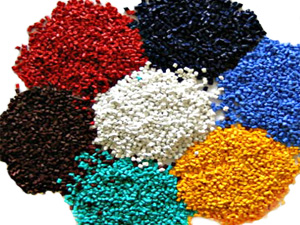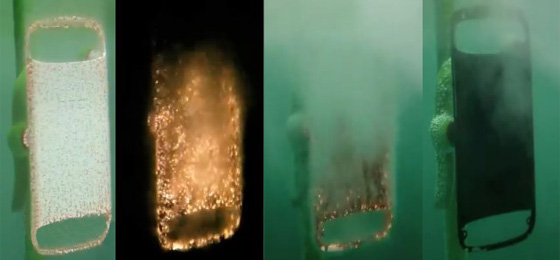What are cell phone housings made of?
We got used to cell phones long time ago and we're still using them every day. For almost all of us, what is really important is its appearance, besides device characterstics, of course. In continuous battle to gain the customer, manufacturers of mobile devices are always trying to find something new that would make their products special. The first thing we see when we are looking at the device is phone housing, and that's what makes the first impression about the gadget. And to make it as more attractive as possible, manufacturers are driven not only by design solutions but by the use of different materials as well.
Have you ever been curious, what is your phone housing made of?
So, for today there are two synthetic substances in use of phone housings manufacturers: Acrylonitrile butadiene styrene (ABS) and Polycarbonate (PC). If you are curious, what kind of material is used in your phone housing, just look under the back cover of your phone. There you will find the following marking - >PC<. If your phone housing consists of front and back boards, you may see >Al< marking on the back cover of housing and >PC< on the main part. It means that the main part of your phone housing is made of polycarbonate, and the metallic one is made of aluminum.
If you are curious, what kind of material is used in your phone housing, just look under the back cover of your phone. There you will find the following marking - >PC<. If your phone housing consists of front and back boards, you may see >Al< marking on the back cover of housing and >PC< on the main part. It means that the main part of your phone housing is made of polycarbonate, and the metallic one is made of aluminum.
ABS is rarely used in pure state as it has low resistance to ultraviolet and is sensitive to atmosphere influences. Such housing would become fragile and start to scatter in a short time. But there is one advantage - it is much cheaper than polycarbonate.
In order to make the phone housing more durable and less expensive, manufacturers usually add in ABS a part of polycarbonate, for material to become more lasting and keep its advantages. Such kind of mixture is really good for accurate molding of all the little elements like air grids, legs and bases for electronic components fastening, diminutive snaps and screw holes, boards junctions etc. And finally, such phone housing is ready for assembling and doesn't need any additional processing.
Thus, almost all housings for the most affordable phones are made of ABS and PC mix. Such housings may go straight to assembling after manufacturing, as they've get color at the previuos stage.
There are also phones with glossy finish surface. In such cases manufacturers use additional processing. And one more really popular housing - frost coating or soft-touch.
Soft-touch – is an elastic rubber-like frost coating that is applied as a lacquer or paint. Starting from 1992 it is frequently used for better contact of plastic and humans skin. This covering includes polyurethane dull paint (white or transparent) and paint hardener.  For different colors and tints the pigments of different colors are added. Though soft-touch covering has one serious disadvantage - it is really thin, approximately 30-60 micrometers. For comparison, humans single hair equals to 80-110 micrometers.
For different colors and tints the pigments of different colors are added. Though soft-touch covering has one serious disadvantage - it is really thin, approximately 30-60 micrometers. For comparison, humans single hair equals to 80-110 micrometers.
For the phone housing to be more strong different reinforcing agents can be added such as fiber glass or carbon fiber. This kind of mixture makes the final material solid and light. For example, adding of 30% of fiberglass doubles durability of the material. But because of high price, reinforcing agents are not widely used .
Nowadays, among all the plastic stuff on the shelfs, metallic phone housings are more noticeable. Usually, aluminum and magnesium are used for housings. Aluminum is very solid and light, but it is difficult to make the needed shapes and details. Magnesium alloys are comparatively good in molding, but comparing to aluminum alloys, magnesium ones are not corrosion resistant and require painting.
The cell phones manufacturers in order to make phone housings more solid and comfotrable in use are planning to change the structure of metal. The technology is called Micro Arc Oxidation, and it changes the structure of aluminum so it starts look like plastic.  The special work piece called "unibody" is used as the basis, it is processed with high voltage of 10 000V. The material becomes five times stronger compared to aluminum and three times stronger than steel. Now the phone housing can be much thinner and would be still very solid. As HTC founders say, such housings will even start a trend not to use cover cases for the phones in future.
The special work piece called "unibody" is used as the basis, it is processed with high voltage of 10 000V. The material becomes five times stronger compared to aluminum and three times stronger than steel. Now the phone housing can be much thinner and would be still very solid. As HTC founders say, such housings will even start a trend not to use cover cases for the phones in future.
So why do the manufacturers keep on looking for new materials? The don't only care about the material cost as it is actually almost the same for plastic and metals, but also about the manufacturing cycle. The fact is that the most complicated plastic detail is ready for sale right after the press, and aluminum housings are to be stamped and cut right after. The cutting process is rather long and time-consuming comparing to molding process under the press. Besides, it is really difficult to make complicated shapes of aluminum.
You will always find the wide range of metallic and polycarbonated phone housings in our online store. Besides, we are offering you phone housings of different classes and color types.
All Spares is always following new trends in cell phones world in order to supply our customers with all the parts needed right in time.
Natalia Zinko